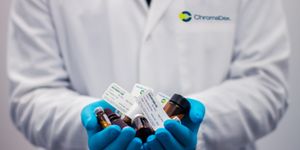A Lab on a Chip Could Save Your Life in an Emergency
Picture this: a hiker on a backcountry trail falls down a rocky embankment, and is left with a deep gash on the leg after the accident. By the time emergency rescue services arrive, the hiker has lost a considerable amount of blood and is going into shock. They are immediately airlifted to the nearest hospital. Upon arrival, the medical staff prepares for a blood transfusion. But first, they need to determine the patient’s blood type — a lab-based assay which can take half an hour or longer to yield results, which could easily spell the difference between life and death for the quickly deteriorating hiker.
Scientists at Japan’s Tokyo University of Science have created a potentially life-saving technology — a fully-automated lab on a chip that can identify a patient’s blood type reliably in under five minutes. This work, led by mechanical engineering experts Ken Yamamoto and Masahiro Motosuke was published in the journal Biomicrofluidics.
Blood typing is a classification based on either the presence or absence of specific molecules called antigens on the surface of red blood cells. These inherited antigenic molecules can consist of different combinations of proteins, glycoproteins, or carbohydrates. The most widely used blood grouping systems (ABO and Rh) denote a person’s blood type as either A, B, AB, or O, with a + or - indicating the RhD status. Transfusing an incompatible blood type triggers an immune response which clumps red blood cells causing catastrophic, potentially lethal effects.
Unlike the standard blood typing protocols that require trained diagnostic personnel, assays for use in a laboratory setting and up to an hour to yield results, the new chip is compact, automated and can be used by anyone, anywhere. All the user has to do is insert a drop of blood and push a button. Microfluidics guides the passage of blood sequentially through the device’s various inner chambers. First, the chip squirts saline solution to dilute the sample. Next, a flurry of air bubbles is released to mix the solutions uniformly. Finally, the diluted sample enters chambers that contain reagents to detect the presence of A, B, and RhD antigens. No specialized equipment is needed to read the result, instead, visual cues allow for quick and easy interpretation of the results.
As Motosuke commented, "The advancement of simple and quick blood test chip technologies will lead to the simplification of medical care in emergency situations and will greatly reduce costs and the necessary labor on parts of medical staff." In the scenario of the injured hiker, their blood type could be determined en route, for more immediate and potentially life-saving interventions upon arrival at the medical facility.
Sources: Biomicrofluidics, Tokyo University of Science.









